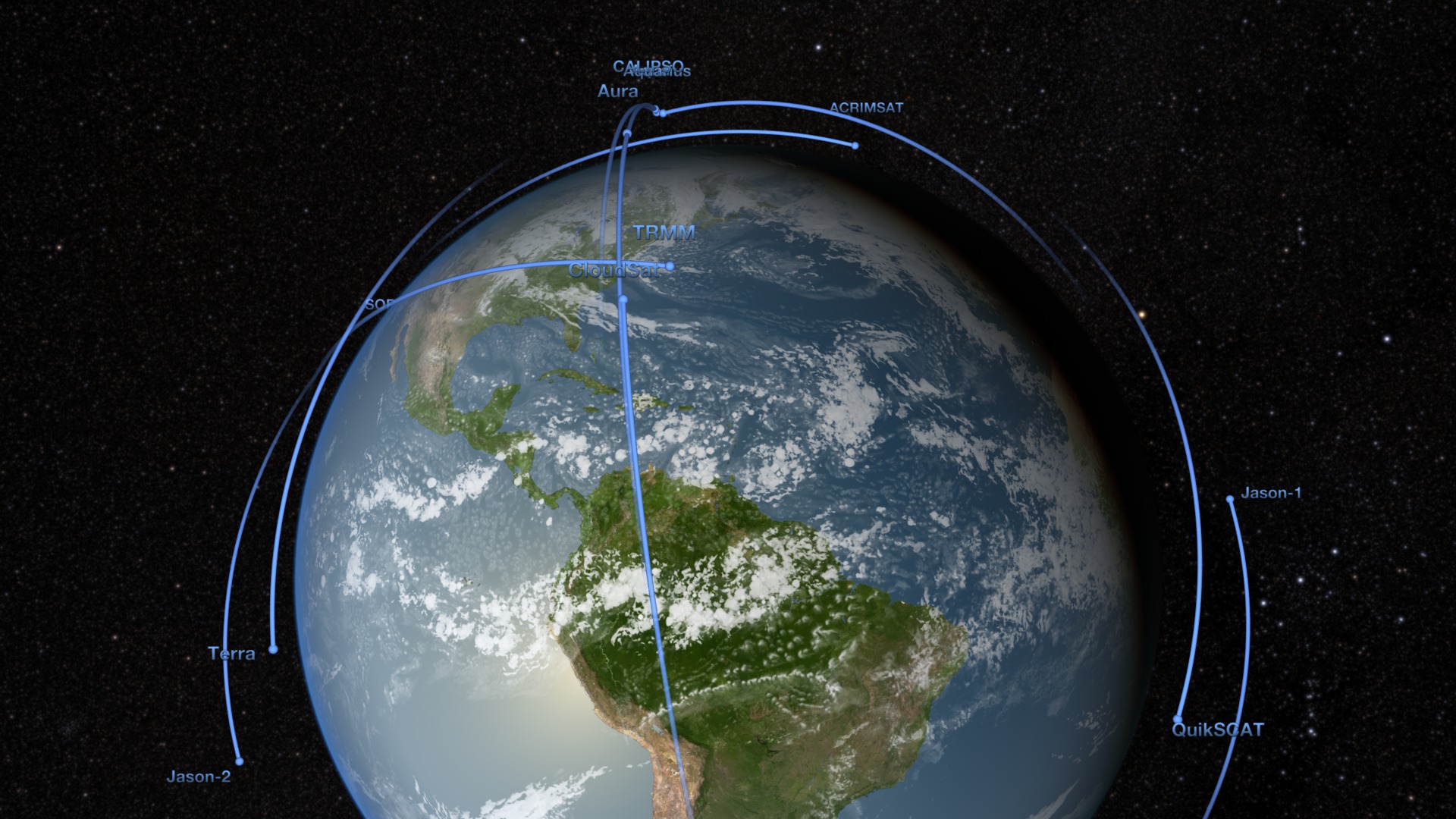Next Generation
Of all the planets NASA explores, none are studied more closely than Earth. Seventeen research satellites currently orbit the planet, collecting data that scientists use to measure the chemistry of the atmosphere, the transport of water from oceans to sky to land and the dynamics of the ice, forests, deserts and cities that cover the planet. Most importantly, scientists combine these global, long-term observations to study how Earth's systems influence its climate. NASA launched two orbiters in 2011—Suomi NPP and Aquarius/SAC-D—and has additional launches scheduled in 2013 and 2014. Collectively, these new missions will continue a 40-year record of land observations, revolutionize our ability to measure precipitation and put in orbit the first satellite dedicated to tracking carbon dioxide levels in the atmosphere. The still images in the media gallery highlight NASA's next generation of Earth-observing satellites, while the visualization shows the actual orbital paths of NASA's current fleet.

NASA has added new satellites to its Earth-observing fleet, with more on the way soon.
With the twin GRACE satellites flying in tandem, the 17 spacecraft depicted here comprise 16 missions.

This image from Suomi NPP became an Internet phenomenon, and shows the satellite's ability to see Earth with remarkable clarity.

The Aquarius mission in 2011 created NASA's first satellite map of global ocean salinity.

The USGS-NASA Landsat Data Continuity Mission satellite will launch in January 2013 and continue a 40-year Landsat record.

NASA engineers work on the core satellite of the multi-spacecraft Global Precipitation Measurement mission, which will launch in 2014.

NASA Jet Propulsion Laboratory's Orbiting Carbon Observatory-2 will measure carbon dioxide levels in the atmosphere beginning in 2014.
Credits
Please give credit for this item to:
NASA's Goddard Space Flight Center
Suomi NPP image courtesy of NASA/NOAA/GSFC/Suomi NPP/VIIRS/Norman Kuring
Landsat clean room photo courtesy of Ball Aerospace
Orbiting Carbon Observatory-2 image courtesy of NASA/JPL
-
Animators
- Ernie Wright (USRA)
- Greg Shirah (NASA/GSFC)
- Tom Bridgman (Global Science and Technology, Inc.)
-
Writer
- Patrick Lynch (Wyle Information Systems)
Release date
This page was originally published on Tuesday, June 12, 2012.
This page was last updated on Wednesday, May 3, 2023 at 1:53 PM EDT.
